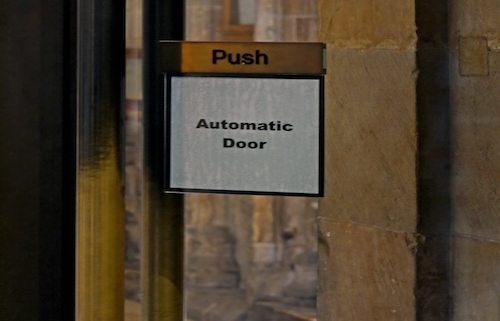Podcast Episode 41 (part 14): Pairs in Review
This week’s episode builds on Monday’s article, part fourteen in the series titled “Complementary Contradictions.” Here is the transcript of the podcast.
Sometimes, you get conflicting words of advice, one which is good and the other which is not, and it requires discernment to determine which is the right advice to follow. But often, these seeming contradictions are, in reality, complementary and, when used appropriately and in the right way, can work together to help you make better decisions. In this series of articles and podcast episodes, we are looking at different leadership ideas or principles that seem to contradict, are opposite sides of the same coin, or at least differ from each other, and we are pairing them up to see how they actually complement each other to make you a better leader
When we started this series, I began by pointing out that there are often two different, or even opposing, approaches to leadership that both have elements of truth. For example, when working with a team, it is important to have a variety of strengths within the team that work together well while filling in gaps. But on the other hand, sometimes the team is not there (or the work you are doing is by yourself), and you don’t have that luxury, so you have to become competent at the things that are more difficult for you to do so that you can fill in your own gaps. Or, on the one hand, It is important for you to focus on your own leadership strengths so that they become even better, because a lack of exercise in those areas will lead to diminished strength. But on the other hand, at the same time, you still need to identify the things that are challenging for you, or are not in your wheelhouse, or not things you enjoy, and work to strengthen those to a greater level of ability so that you can do them when necessary. Failing to do that will likely cause important things to be neglected, which will have consequences.
These serve as examples of the point we were making in this series, that there are leadership principles and practices that may seem to be contradictory to each other but which are actually both true, depending on the need or the circumstance. So before you choose one or the other, perhaps you should first think about the valuable lessons found in both and figure out how to apply them cooperatively.
Now coming back full circle, that’s what we did in the last few weeks. Specifically, we identified and discussed six sets of complementary contradictions as pairs of principles that play well together, with the purpose of helping you become a better leader by incorporating both pieces of advice, not just one or the other.
The first pair that we looked at was that you tend to see what you are looking for, but not see what you are not looking for. What that means is that it is our tendency to see what we are looking for, and then to only see what reinforces the belief that has been formed by what we saw, which leads to forming perceptions that can color our view. To change those perceptions requires intentional work. Check yourself, to make sure that you are seeing things correctly and that you not letting a single experience, misinformation, or incomplete information become the filter through which you are viewing everything. At the same time, it’s fairly easy to miss things that you are not looking for. You need to recognize that tendency and then remove any expectations of what you think you might see. After that, you can work at zooming out and zooming in (which was the second pair of principles we discussed – to step back and take a wide-angle look at everything followed by looking at more specific details, and finally you can try to look through different eyes, by trying to see through the approach or perspective of other people or other angles.
The second pair we looked at was the matched skills of zooming out and zooming in, and we compared it seeing both the forest and the trees. A good leader needs to be able to see the whole forest, or the big picture. Like puzzle pieces, each piece of the context, the environment, the organization, or the situation fits into a larger context, and you can best see how it fits when viewing the whole picture. In order to see the whole picture, you, as a leader, must be able to get on the balcony, zoom out, and get above the forest to be able to see clearly. Being able to do this will keep you from getting lost among the trees, and will provide the perspective necessary to implement changes and adjustments. Therefore, at the same time, you need to be able to get in among the trees and see how they are connected. You will be more effective if you can learn to connect the dots. See the trees, find the connections, and use those connections to make decisions that will result in positive changes and improvements, decisions that will move you and the organization forward.
The third pair we looked at was what happens when a plan comes together, but then what to do when a plan falls apart. For this pair, we used the analogy of a road map to illustrate the importance of a strategic plan. We established the importance of having an intentional and methodical process for assessing where you are, determining where you need to be, and drawing the map that shows how you will get there. The map is your plan, and therefore it is crucial for getting from here to there without getting lost. So when you are stepping into a new situation, facing a need for change and growth, have carried out or completed the last strategic plan, or have simply stagnated . . . it’s time for a plan to come together. However, sometimes (to continue the road trip map analogy), the car breaks down, there is road construction and detours, or the rest stop is closed. Everything you planned out starts to fall apart, and you have to figure out what to do. You may have had the best of intentions, but it just doesn’t work out the way you wanted it to. Now it’s time to accept the circumstances and move forward and make adjustments and corrections, or start over, or throw it all out and move on to something else. Regardless of what you decide, it’s time to do something different.
That leads to the fourth pair, where I said to do what works . . . until it doesn’t, and then do something different. First, be intentional about doing what works (which is generally evident in the results). Don’t be afraid of allowing the people who would know best to have input, and remember to periodically assess and analyze because we do need to make sure that what we are doing still works. But don’t change for the sake of change when what you have is working. However, if what you have is not working, don’t keep doing it. Life throws curve balls, and much of what happens around us and to us is unpredictable. Try as we might to prevent it or avoid it, change happens, and if we are not willing and able to have a degree of flexibility, we will be frustrated, disappointed, and defeated. Therefore, to be an effective leader, you must be able to be flexible, willing to give up control (specifically, over those things that you can’t control), and willing to do something different with a positive (not a defeated) attitude, and willing to learn to become more creative.
With the fifth pair, I talked about being a teacher, but first being teachable. To be an effective teacher, you must care, tell, show, and respond. These are all behaviors that can and should characterize you as an effective leader. Perhaps you have already been doing this and didn’t realize that in doing so, you have been a teacher. Perhaps you need to begin to do them. Regardless, remember that good teachers help students to achieve, even beyond what they believed was possible, and so it makes sense that if you can be a leader who teaches, the people you lead will grow, and you will benefit. But first, you must be teachable. “Teachability” – or, the ability to be teachable – is essential to your growth as a leader. Therefore, humble yourself, study, practice self-reflection, and listen to feedback; all of these practices will help you to learn, but they must be willingly embraced. If you will do so, you will become a more effective – and respected – leader (and teacher), all because you made yourself teachable.
With the sixth and final pair, I focused on the two sides of communication, giving and receiving information, when I said to first close your mouth and use your ears, then to open your mouth and use your words. It is easy for a leader to assume that leadership means taking charge and giving direction. However, I believe that these principles from Scripture give us a very different picture: leadership should be characterized by listening. Ask questions. Make it safe for people to share. Validate. Make sure you get the whole story before you react. Close your mouth, open your ears, and listen. But then we need to talk as well as we listen. To do that, we must be intentional about what and how we communicate, to ensure that our words are meeting the needs of our listeners. Make sure that we are communicating information that our followers need to hear, that we are doing it often and accurately, and that we are using stories for the context. Then, when that happens, our words will fill in the page in front of them with the information that will be best for their growth and their performance. Be quick to listen, but then be careful to use your words well.
At the outset of the series, the goal in front of us was to see how these seeming contradictions are, in reality, complementary and can play well together so that you can use them to become a better leader. There are many situations you will face, many dilemmas to resolve, many choices to make, and many circumstances to address. Over the last 14 weeks, we’ve looked carefully at these six pairs so that we can learn lessons about how to lead well. The next step is up to you. Learn how to handle the challenges of leadership even better by putting these ideas together in your decision-making process. Applying these complimentary contradictions in practice will make you a better leader.





